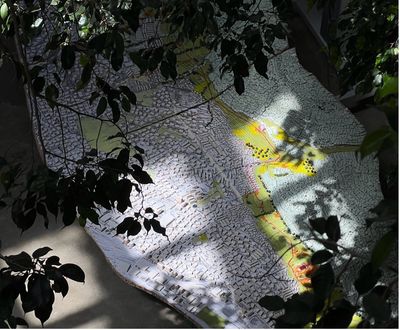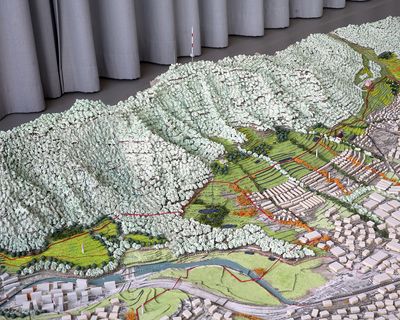Urban Agroecology on Uetliberg’s Foothills: A Research and Design Study with Grün Stadt ZürichAlice Clarke, Nancy Couling, Milica Topalović, Jan Westerheide
How can agriculture become part of Zurich’s urban future? This question guided the joint study conducted by the Chair of Architecture of Territory together with Grün Stadt Zürich (GSZ), the City of Zürich’s public green space department. Against the backdrop of the city’s projected 25% population growth by 2040, the project explored the potential of agroecology to enrich its open landscapes, strengthen social exchange, and provide new habitat for diverse species.
The study focused on the sequence of open spaces and landscapes along Uetliberg’s eastern flank between Altstetten and Leimbach – the contact zone between forest and city, where the agricultural land borders housing estates, communal gardens, sports fields and cemeteries. The land here is predominantly owned by the City of Zurich, managed by GSZ, and leased to farmers and gardeners. With significant changes expected on GSZ’s farms in the near future due to a renewal of leases, the study came at a timely moment: the impending transformation offered a unique opportunity to develop a vision for the role of agriculture at Uetliberg’s foothills.
The research takes momentum from a broad social shift observed during and after the Covid-19 pandemic. While public enthusiasm for participatory agriculture peaked during Covid, longer-term trends – particularly ecological concerns and the desire to reconnect city life with farming – have remained strong. Zurich’s cooperative farming pioneers like Ortoloco, meh als gmües, Stadtrandacker, or the newly founded Huebhof demonstrate the potential of urban farming practices, even as they face challenges of fluctuating participation and limited space.
How might urban open spaces evolve into agroecological landscapes that bring together food production, recreation, and ecological regeneration? What forms of urban agroecology could complement the existing community-supported agriculture and community garden models? And what role should the city government play in supporting such transitions?
The project unfolded in two stages: in the autumn of 2024, a preliminary study encompassed cartographic analysis, interviews with stakeholders, and a first design brief. In the second stage in the spring of 2025, a MAS in Urban and Territorial Design (MAS-UTD) design research studio deepened these research insights and developed concrete design projects.
The exchange with Uetliberg’s stakeholders – including farmers, gardeners, housing cooperatives, GSZ staff, and others – was vital for the study. Through fieldwork, interviews, and a participatory workshop, the stakeholders contributed their perspectives. A large-scale physical model served as a tool to visualize networks, conflicts and potentials, becoming the basis for a shared conversation.

